The Cardano ecosystem is booming. In the silence of this bear market, a lot of projects are building and innovating more than ever on the top of the Cardano network. I thought it would be a good moment to step back and answer that simple question: what is Cardano? This article will take you through the entire journey from how it works to why it’s different. I will also try to give an overview of the values of the ecosystem, Finally, I will detail the investment case backed with data to shed some light on what I consider to be the most interesting altcoin of the crypto space.
1. What Is Cardano?
Cardano is one of the main blockchain technologies at the time of writing. To understand the problem Cardano is trying to solve, I probably need to go back to the defining moments of its history.
The most significant one is maybe the first public speech of Charles Hoskinson, leader of the project, at a TED talk in 2014:
Yes, everything is already in there. Cardano will be about identity, equality and governance delivered through a decentralized multi-assets blockchain.
But better than my words, here is the pinned tweet of Charles Hoskinson himself defining the project:
Cardano was founded a couple of years ago (2017) through a company called IOHK. It’s probably the fastest growing competitor to Ethereum. It’s a a third generation blockchain based using Proof-Of-Stake (POS). Cardano (like Bitcoin) is an Unspent Transaction Output (UTXO)-based blockchain, which utilizes a different accounting model for its ledger from other account-based blockchains like Ethereum.

The phases of development of Cardano are explained in their roadmap:
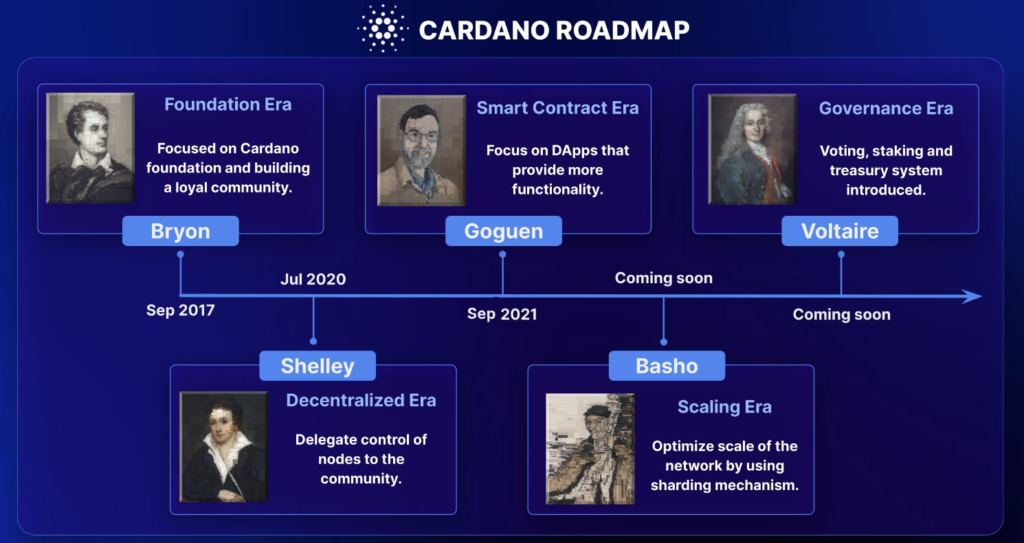
Each era is centred on a topic: decentralisation, smart contract, scaling and governance. Cardano has delivered “Goguen” for smart contracts and is working on scalability (“Basho”).
If you want a summary of what Cardano is trying to achieve technically, there is a video that became an absolute reference over the years:
2. How Does Cardano Work?
Cardano is using a POS consensus based on a component called Ouroboros. Today, generating a single block on the bitcoin (POW) blockchain requires a number of hashing operations exceeding 2^60 which results in striking energy demands. Indeed, early calculations indicated that the energy requirements of the protocol were comparable to that of a small country. Cardano, with its POS, is greener than Bitcoin with regard to energy consumption and cheaper than Ethereum with regard to transaction fees.
Let’s detail the different features of the protocol:
-Ouroboros, the staking mechanism works based on epochs (5 days). It produces blocks for each pool and then calculates rewards for each participant based on assets repartition:
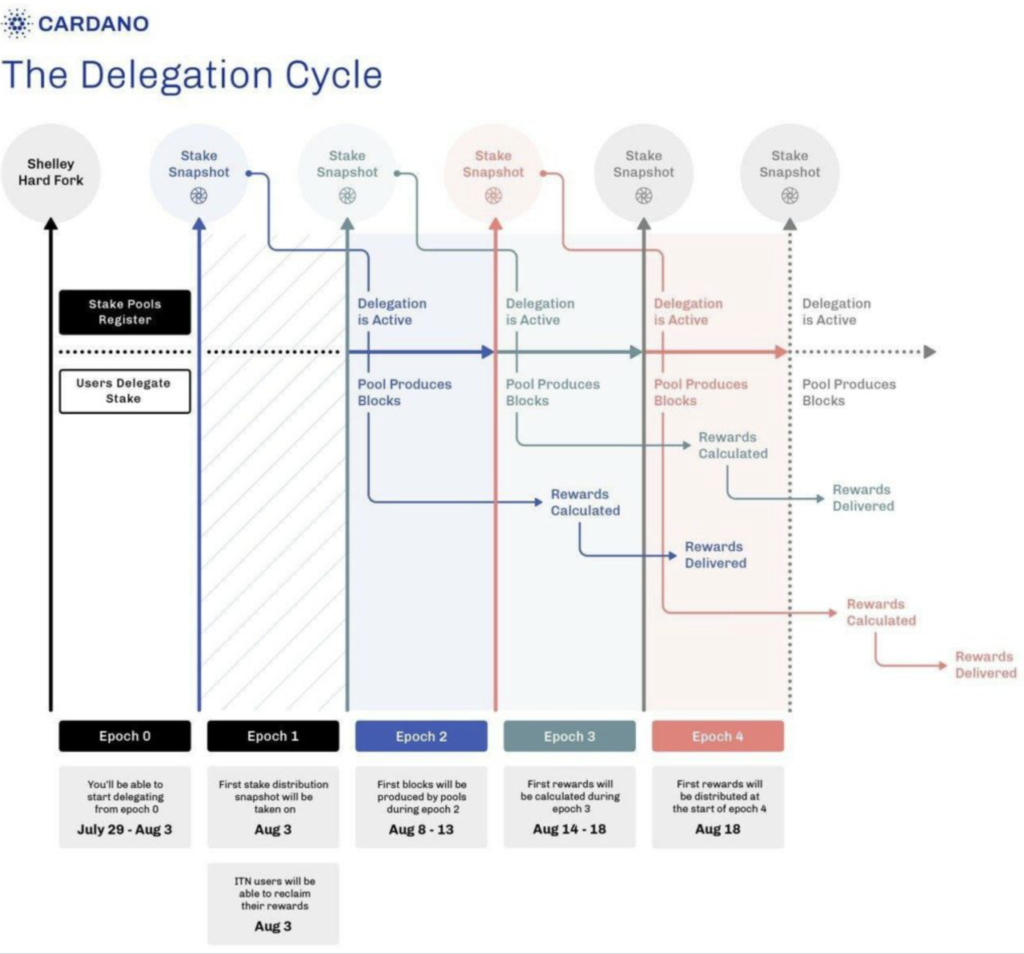
-The transaction model (UTXO) of Cardano is inspired by Bitcoin:
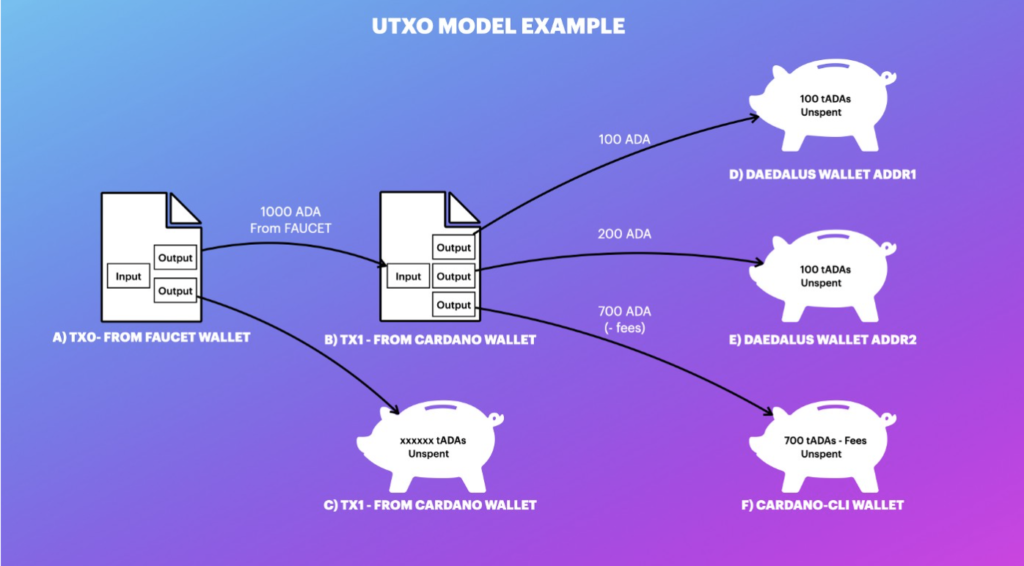
But Cardano is actually extending that model with EUTXO. How?
The EUTXO model extends the UTXO model in two ways:
- It generalizes the concept of ‘address’ by using the lock-and-key analogy. Instead of restricting locks to public keys and keys to signatures, addresses in the EUTXO model can contain arbitrary logic in the form of scripts. For example, when a node validates a transaction, the node determines whether or not the transaction is allowed to use a certain output as an input. The transaction will look up the script provided by the output’s address and will execute the script if the transaction can use the output as an input.
- The second difference between UTXO and EUTXO is that outputs can carry (almost) arbitrary data in addition to an address and value. This makes scripts much more powerful by allowing them to carry state information.
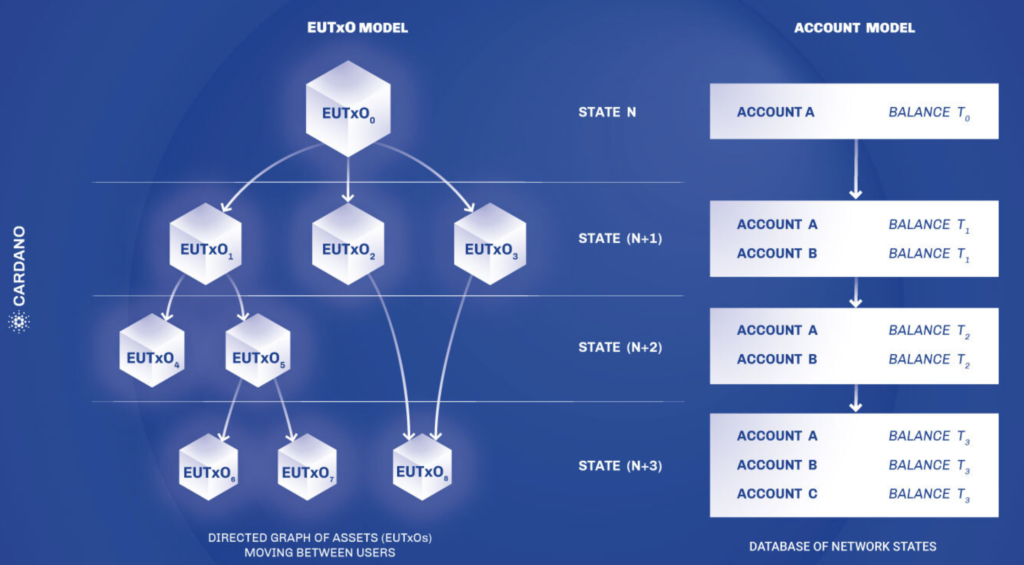
3. What are the challenges ahead?
Now, let’s talk about the challenges. One of the challenges that Cardano faces at the moment is scalability.
It will be tackled by different components:
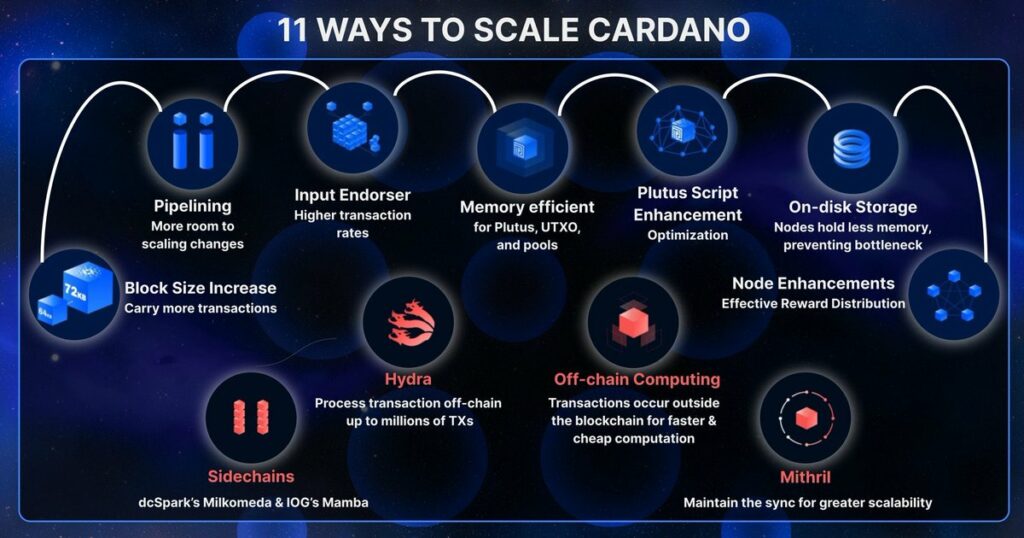
Some of these ideas have been released or will be released very soon with the Vasily update next month. Some others are long term work like Hydra. Hydra will implement horizontal scaling, meaning that adding more nodes to the system will increase its throughput. It will make the whole architecture scalable by design:
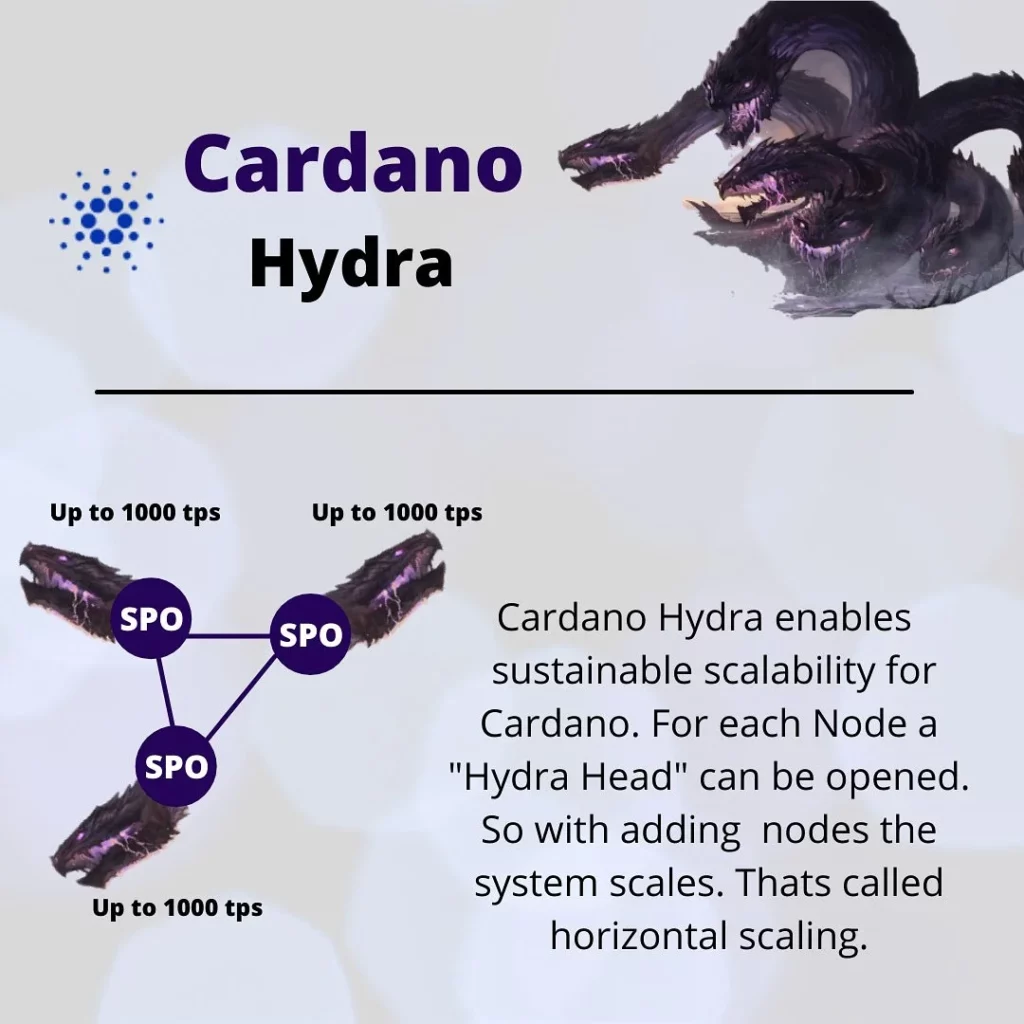
Another challenge on the list is decentralization. The main argument against Cardano is that it is more centralized than Bitcoin or Ethereum.
However, to be able to say something like that, one would need to define “centralization”. Charles Hoskinson always tries to defend Cardano by reminding people that there is no real definition for the term. If you want the full lesson, it’s here:
If stake pools are booming and independent from one another, isn’t it decentralized? The challenge is indeed to keep those pie charts diversified enough:
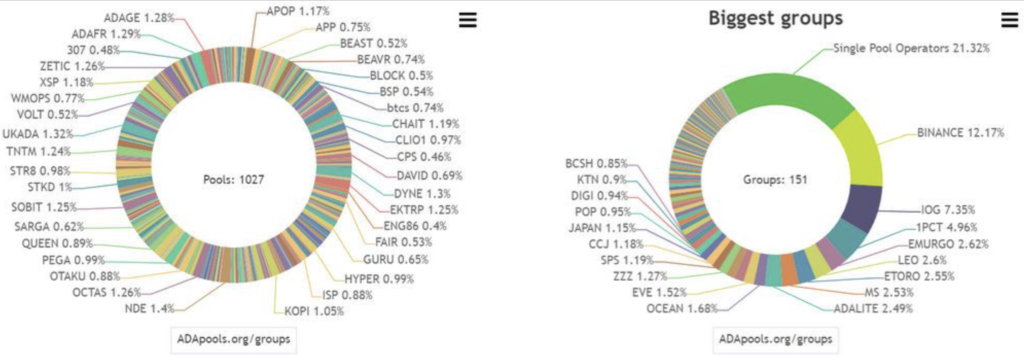
4. Why Is Cardano Different?
First of all, Cardano is very research-oriented. A lot of papers are written in LaTeX with cryptography formulas from various universities all over the world. You want numbers? Here you go:
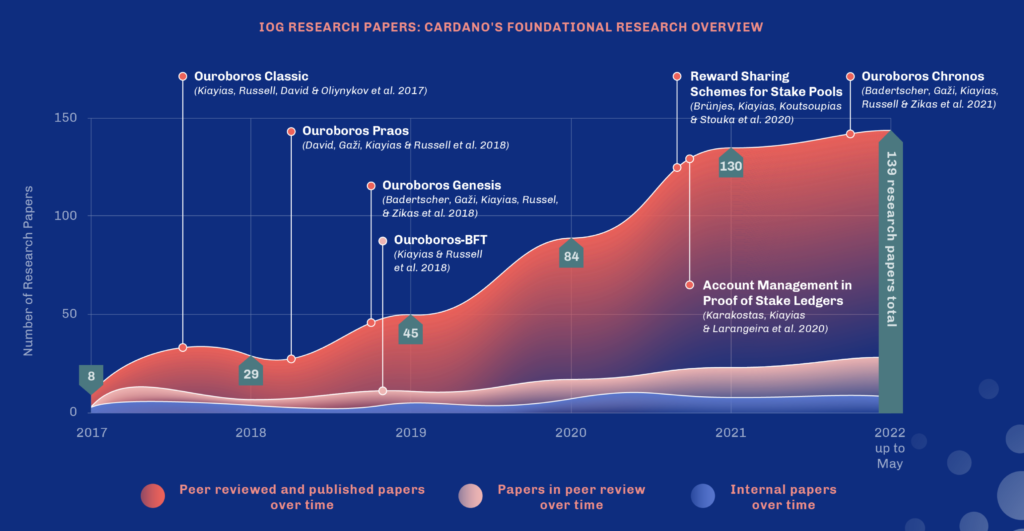
This is not that common, the other chains usually simply have 1 whitepaper and implement it. It is rare to see projects trying to fund research in universities with a bottom-up approach. The reason for that is that most protocols don’t believe that it is necessary to have researchers around. For them, it’s a loss of time and funds. I was thinking the same not so long ago until I saw all the recent horror movies of 2021-2022. Now, I’m a believer.
Another difference with other protocols is that the smart contract module is also accessible through a no-code module called Marlowe. The idea behind is to give the possibility to non-developers to build smart contracts with logical blocks:
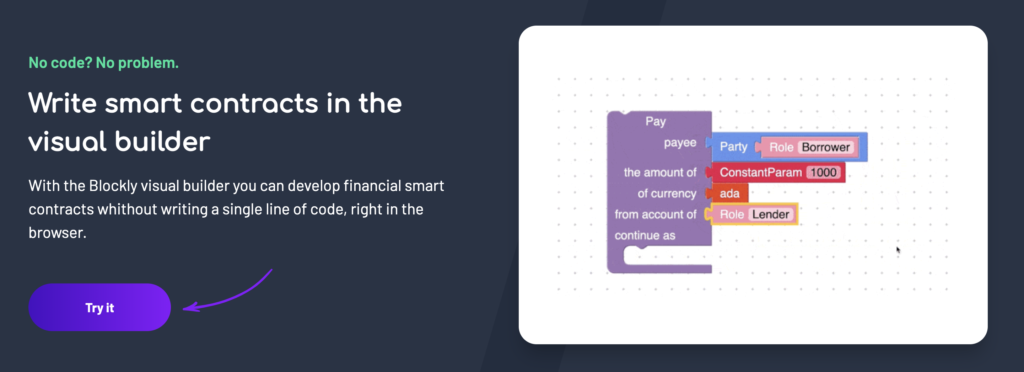
But that’s not the only thing that makes Cardano different. Cardano is also a launchpad, a VC fund, through its Catalyst project allowing it to fund the ecosystem through people like you and me voting with their wallet:
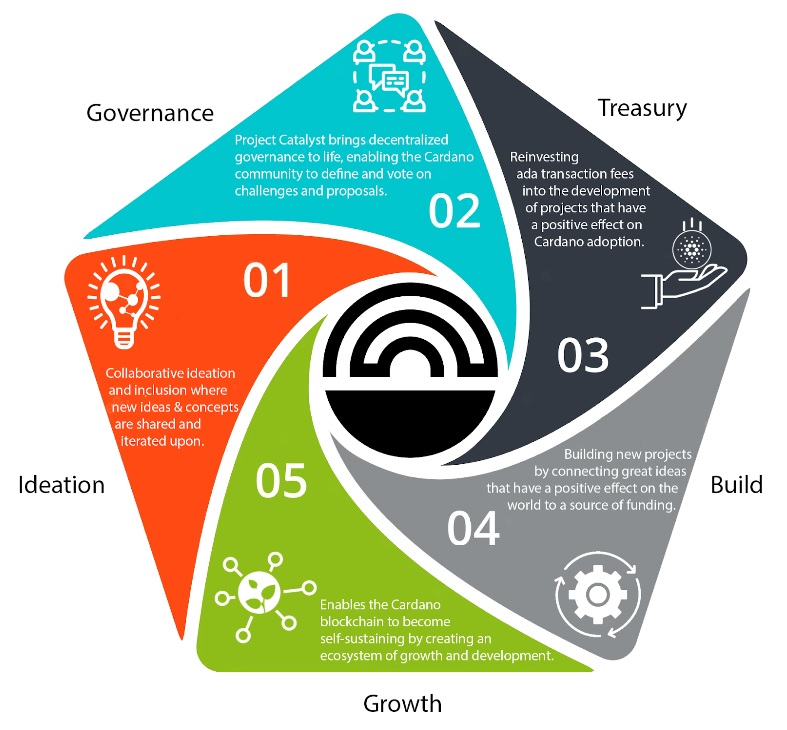
Does it work? Judge by yourself, 1000 projects building on Cardano:
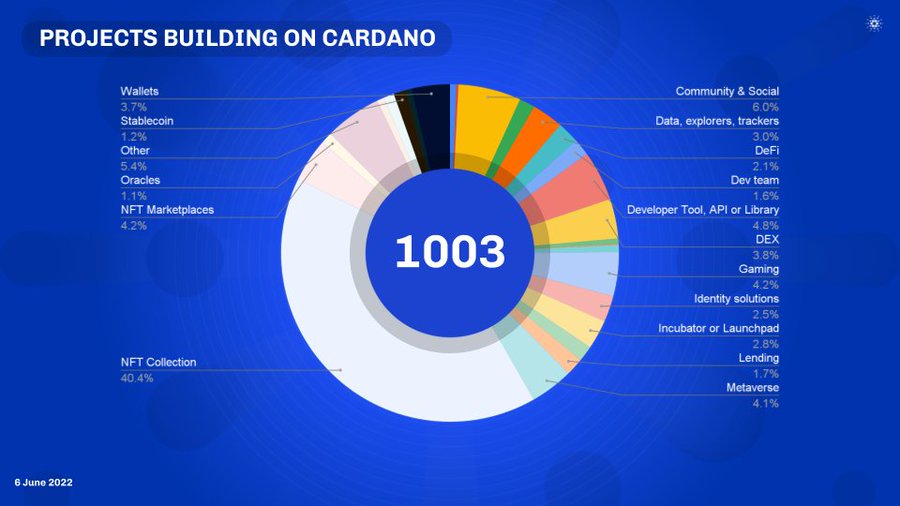
From a technical point of view, Cardano is also very different. It is because of the programming language its built upon: Haskell. What is Haskell? Answer with kittens:
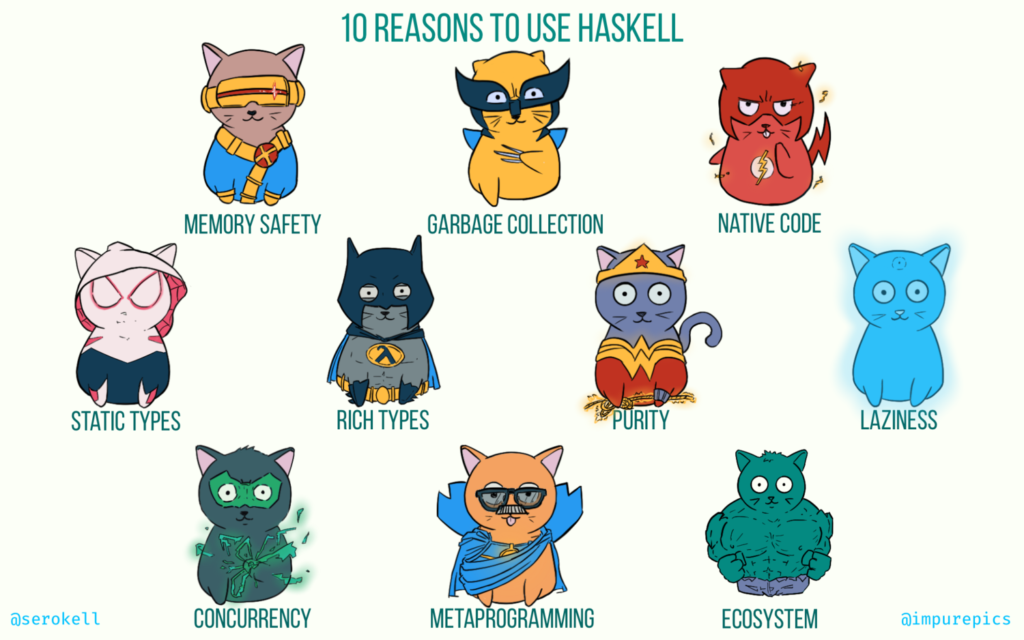
Haskell is a great technology to deliver very high quality software. How to judge the quality of software? Well, it’s mostly about correctness, performance, and maintainability. Haskell is just great in these domains. Let’s take them one by one:
- Correctness. Strong static typing, purity, and immutable data, are essential for writing code that adheres to specifications. Software written in Haskell tends to be secure, reliable, and bug-free.
- Performance. GHC (The Glasgow Haskell Compiler) generates optimized, native executables. Its runtime system supports green threads and ships with a multi-generational garbage collector. Haskell is a perfect choice for high-load concurrent applications, such as web backends.
- Maintainability. Haskell encourages using the type system to model the business domain and making the assumptions explicit. As a result, refactoring the code and adapting it to changing requirements is much easier.
A final reason for me to consider Cardano as special is the care taken to build its stablecoins ecosystem. Let’s take the example of DJED.
It has been carefully designed with the “Cardano mindset” to avoid de-pegging or bank runs:
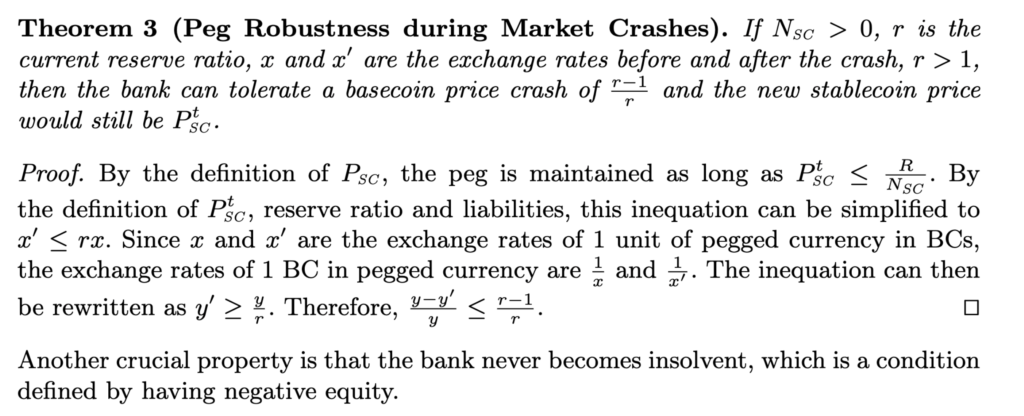
This is based on an algorithmic synchronisation using the ultra-stable smart contracts of Cardano:
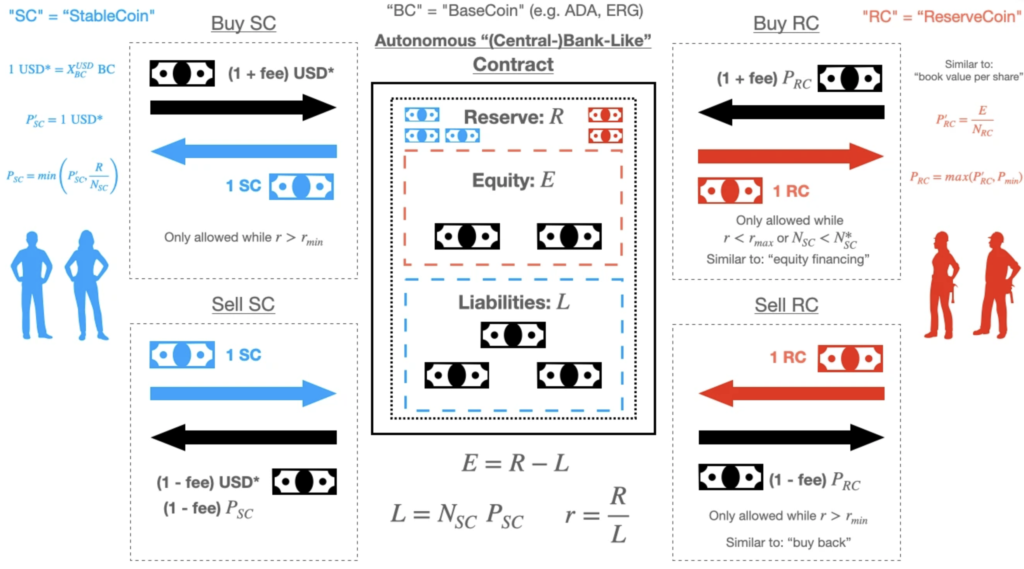
Finally, the last major reason why Cardano is different: Cardano is slow and stable. IOHK will not hesitate to postpone a release to NOT “move fast and break things”. When I see publications like that to delay the Vasily upgrade for stability reasons, I double down on ADA:
The IOG engineering team is extremely close to finalizing the core work, with just seven bugs still outstanding to complete the hard fork work, with none currently ranked as ‘severe’. After some consideration, we have agreed NOT to send the hard fork update proposal to the testnet today to allow more time for testing.
I work in software and I know what this means. It means: “we want all our tests to be green before going to production and we will never compromise on it”. After billions lost in crashes, de-pegging and bank runs: I like it.
5. How to store and stake ADA?
You can stake ADA on a centralized exchange or in a cold wallet. After the scary things that happened in 2022 (Luna crash, Celsius collapse), I would recommend the second option.
Different wallets exist. The historical one is Daedalus:
It is great but slow as it synchronises with the blockchain entirely, which is the equivalent of running a Cardano node on your laptop.
If you want a lighter option, you can use Yoroi:
In 2022, a new wallet appeared: the Lace wallet.
If you want a detailed write up, check my article about Cardano staking off-chain. I don’t have a strong opinion on stake pools, I change regularly and try to pick pools with enough people so it is safe. You can look at various parameters and make sure they suit you:
- Saturation : Measures the stake in the pool and indicates the point at which rewards stop increasing with increases in stake. This capping mechanism encourages decentralization by discouraging users from delegating to oversaturated pools. Delegating to a pool that is closer to saturation can lead to more rewards.
- Rank: A hierarchical ranking based on the potential rewards you will earn if you delegate the intended amount of stake to this pool, assuming it reaches saturation. This ranking represents a long-term expected outcome.
- Live Stake: Percentage of the total stake in the system controlled by the pool. Calculated as follows: the stake pledged by the pool (stake delegated by the pool owners to their own pool) + the stake currently delegated to the pool, divided by the total stake in the system.
- Pool margin: The share that the stake pool takes from the rewards before distributing them among its delegators.
- Pledge: This is the amount that the stake pool owners commit to delegate to their stake pool. One can expect that operators with higher balances delegated to their own pool have more incentives to perform well. Stake pools that do not meet their pledge requirement may produce blocks, but will not produce rewards.
- Cost per epoch: The fixed fee per epoch that the stake pool charges to cover its operating costs.
- Produced blocks: The total number of blocks that the stake pool has produced up to date.
6. What To Buy With Cardano?
Now that you have some ADA, what can you do with it? A first possibility is to buy CNFTs:
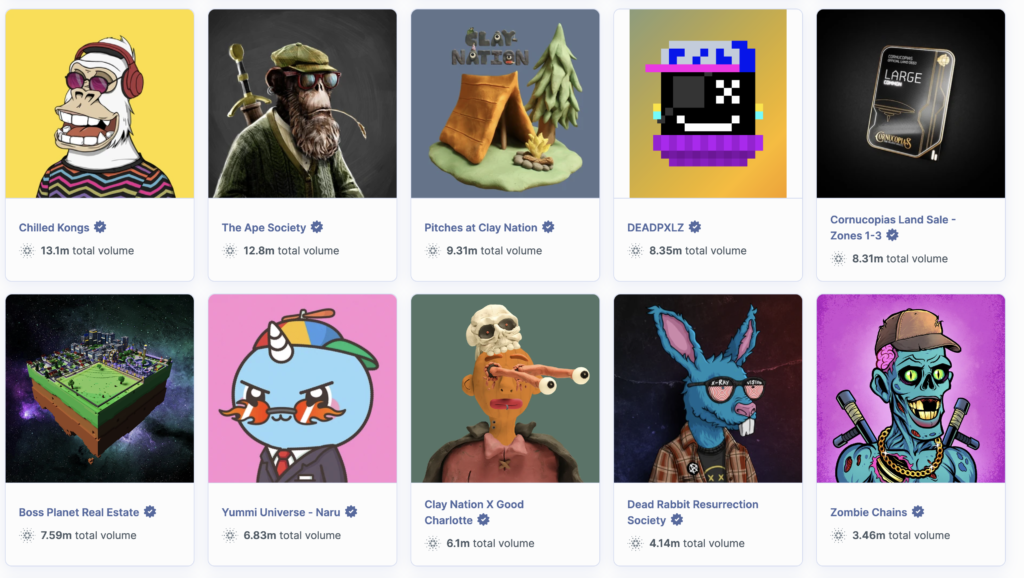
A good place to start for CNFTs is to pick a good web browser wallet. There are a couple of options (until Lace is deployed and functional) out there like Nami, Eternl, Flint, Gero or Typhon:
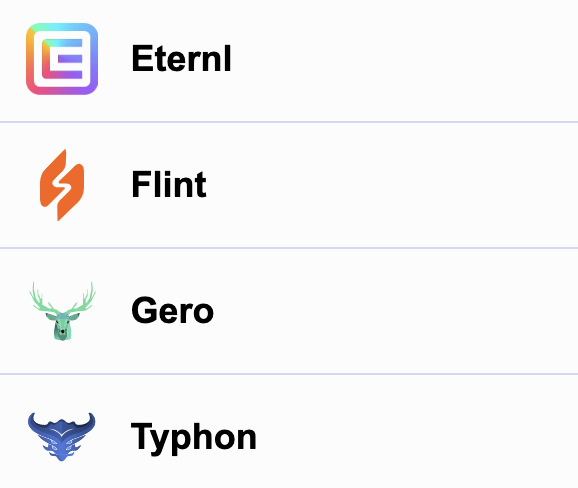
You can also use that ADA in a DEX and swap for another token to get good yields out of it. You can find a list of DEXes here. Most of them are quite new and are maturing with the ecosystem, however they’re all functional and give access to various features
Minswap for example, offers different liquidity pools open to everyone:
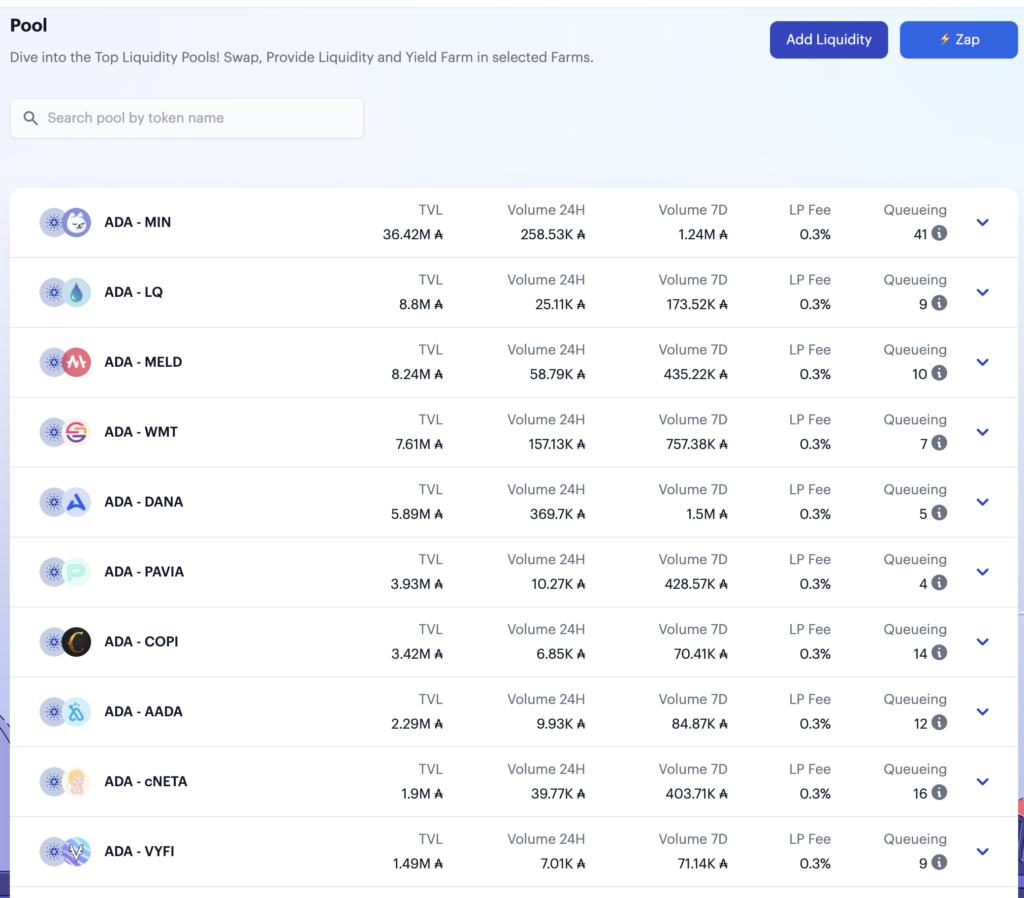
Another important use case is ADAPay and the partnership with COTI:
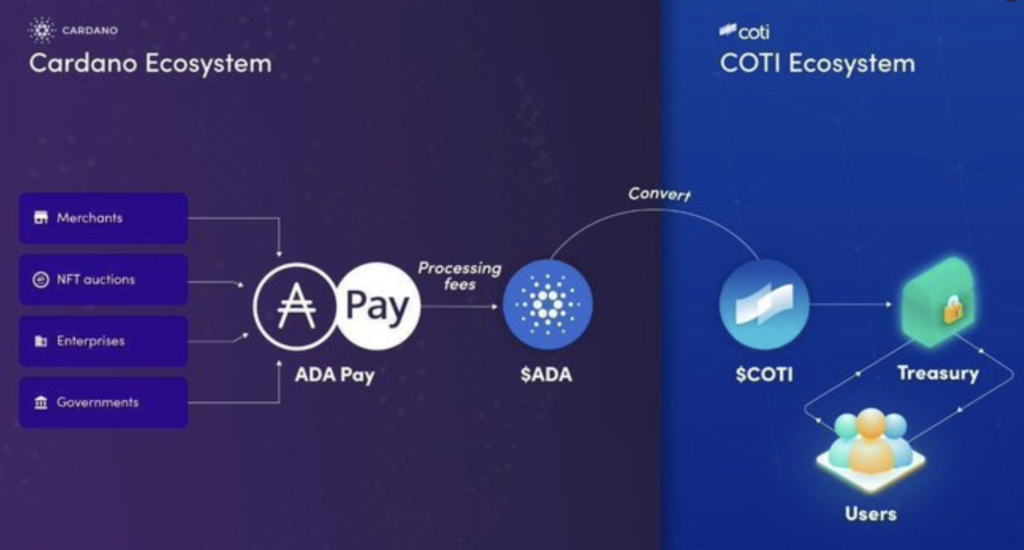
it will be possible to pay for products (e.g: online merchants) using your ADA on the top of the COTI ecosystem. The payment fees will be sent to the COTI treasury and shared which COTI stakes. The community of ADA, COTI and DJED believe in the same vision: 3 tokens interconnected strengthening one another. If you want to know more about all of this, you should probably read my article about COTI.
7. ADA As An Investment
The first thing to say is a general statement about crypto. The Bitcoin dominance is in a macro downtrend since 2017:
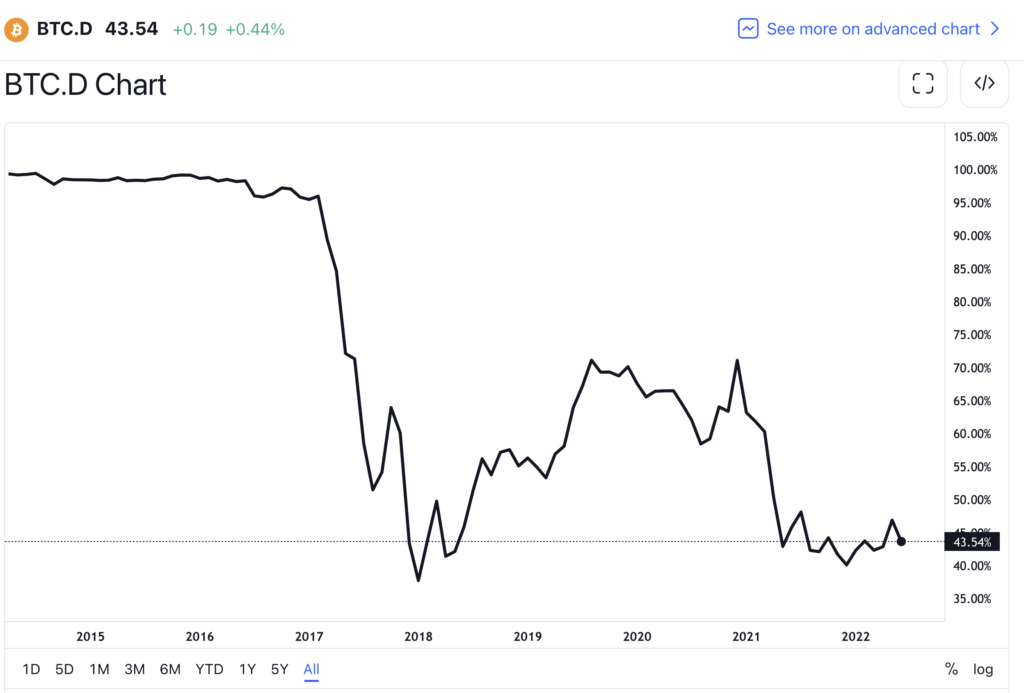
My opinion is that this is going to continue and that very few altcoins will win. When the Solanas and the Terra Lunas are restarting every week or crashing, Cardano is absolutely smashing 24/7 with smart contract executions going to the roof without bugs nor hacks:

Also, the circulating supply of ADA is increasing slower than most altcoins making it scarcer:
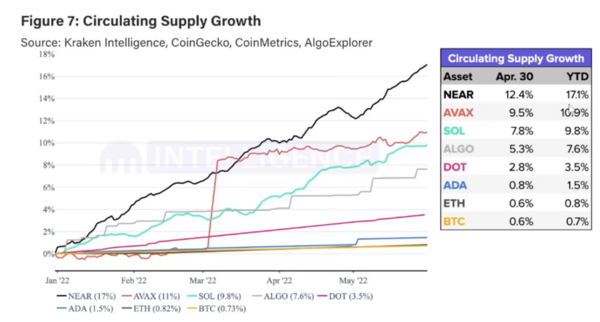
From a development point of view, the Github activity on Cardano is very often coming… first in the ranking!
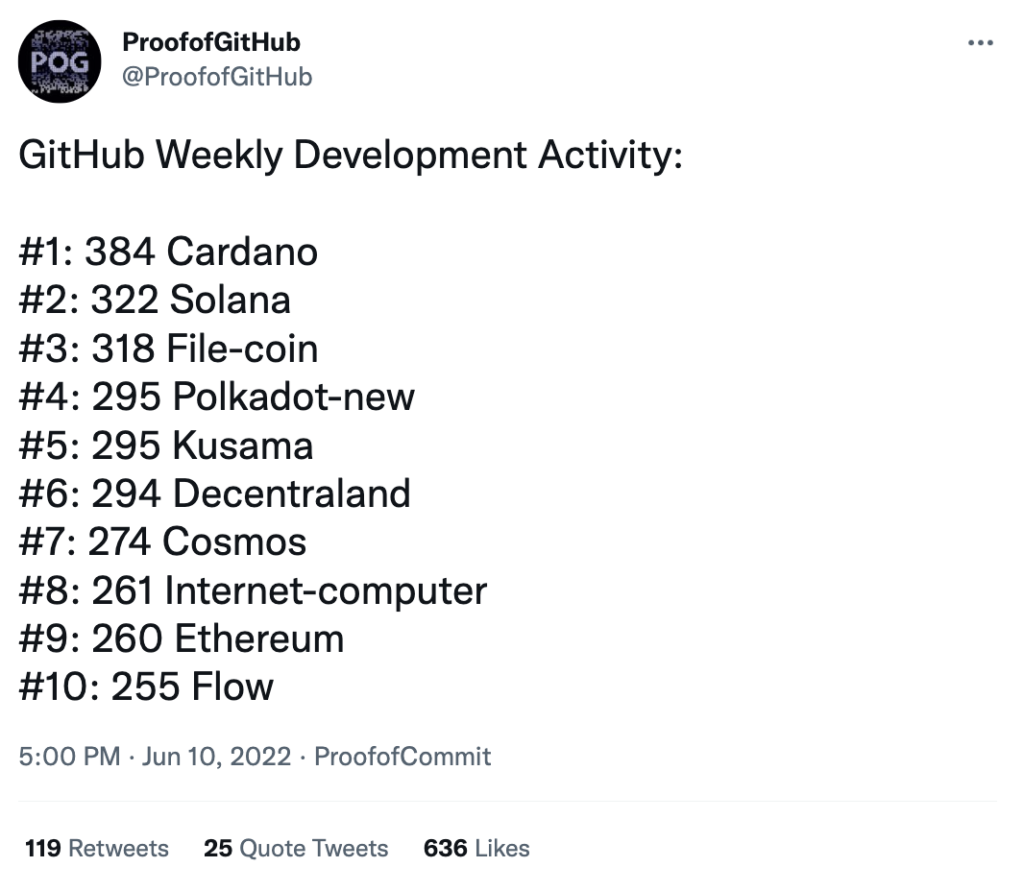
From a “smart money” point of view, Grayscale (the elephant in the crypto room) increased its ADA holdings recently:
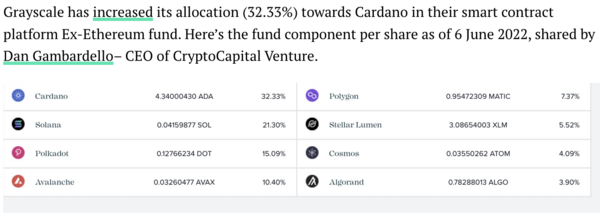
The price also got hammered, purging the tourists with a nice entry point if you have a 4-year investment horizon:
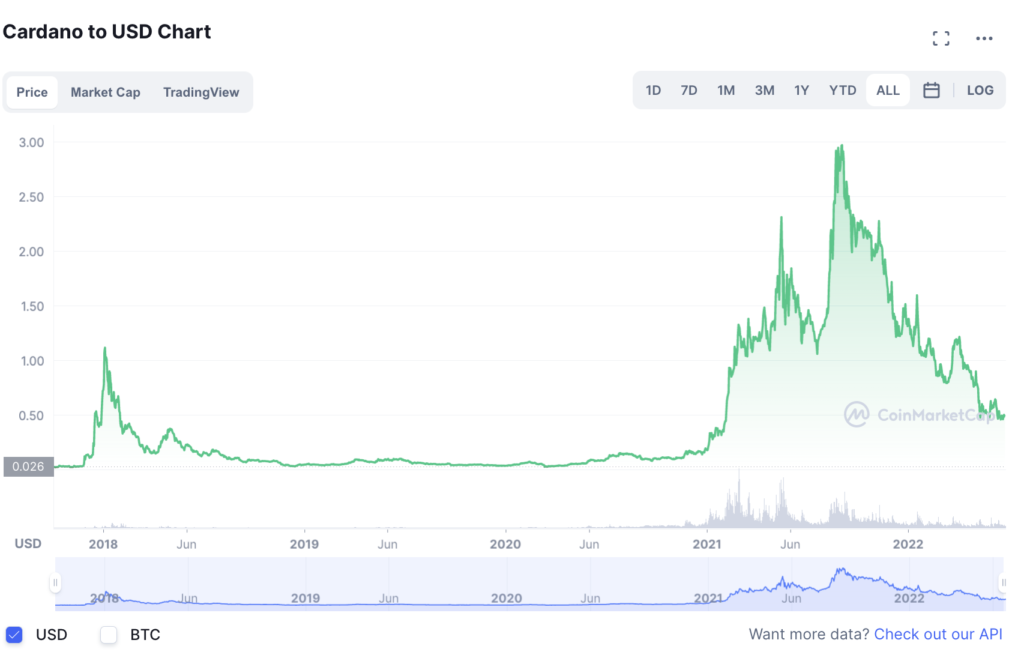
The volume of transactions (in blue) seem to not want to drop. It’s above the pre and post bubbles volumes:
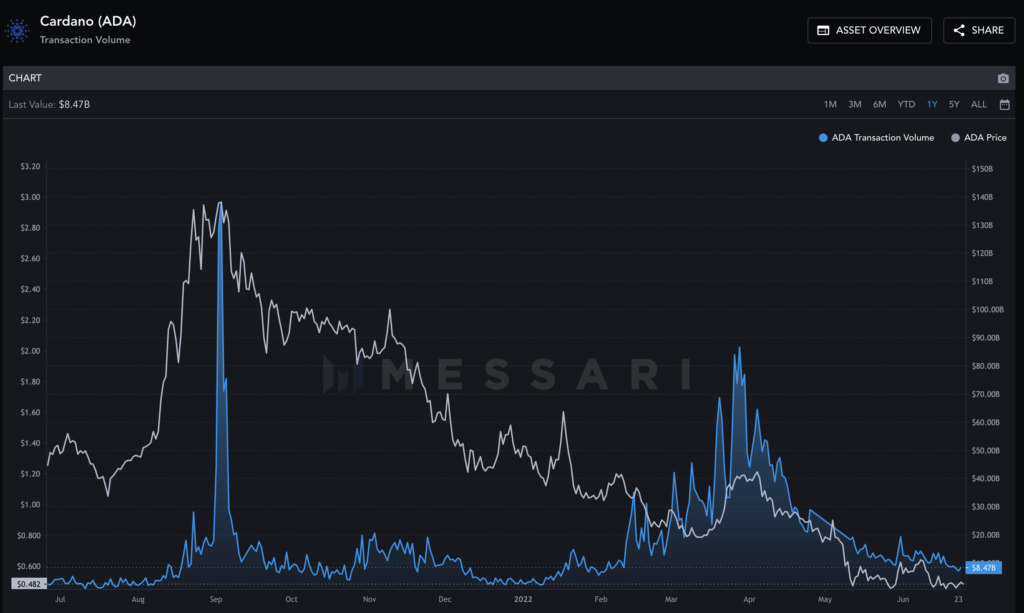
That being said, one of the risks with Cardano is the risk on regulation: Security? Commodity?
On that front, seeing Charles Hoskinson being proactive going to Washington to discuss that topic in the Congress makes me feel safe holding ADA:
8. Conclusion
I love ADA and it’s my main crypto holding. As a result, I’m a bit biased. However, I tried to come up with a complete summary covering what Cardano is and how it’s different from its competitors. The use of a different type of programming language, the implementation of a no-code layer making it also easy to use and the development of an ecosystem of projects that regular people can contribute to through Catalyst is showing resilience, governance and pragmatism.
The ADA investment case seems interesting to me. In my view, the bitcoin dominance is in a macro downtrend and only some altcoins will win at that game. The low price of ADA, the volumes reaching a support and the growing activity on Github with smart contract executions skyrocketing convinced me to keep my Cardano bag. The regulatory risk seems low to me because Charles Hoskinson is well connected to the Congress and to the politicians in Washington: this is a major point to consider. What will Cardano hold for the years to come? Hard to say but my money is on it.
Thanks for reading.
n.b: this is not financial advice
